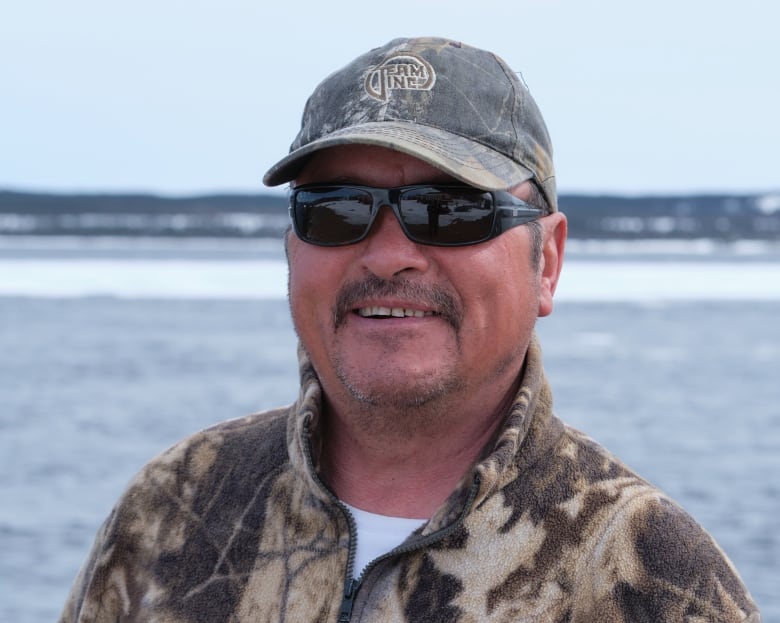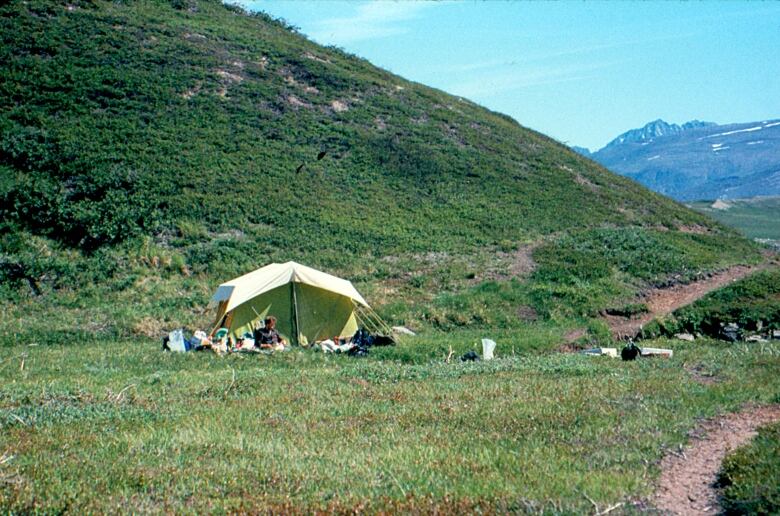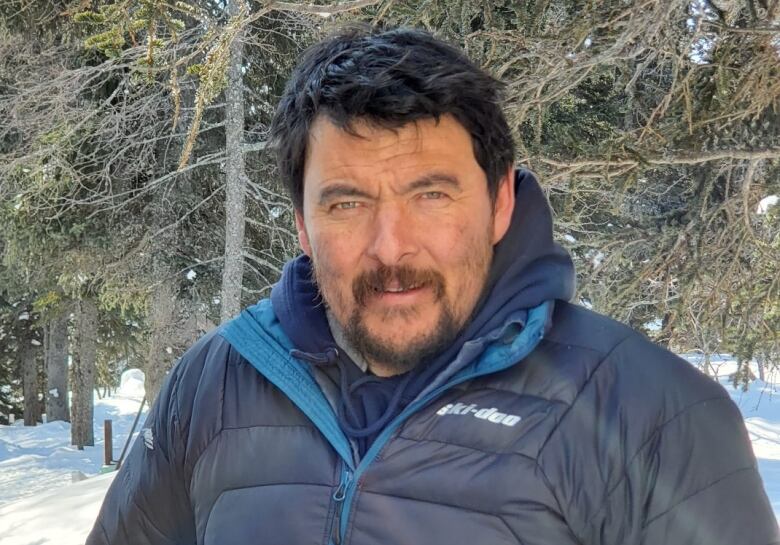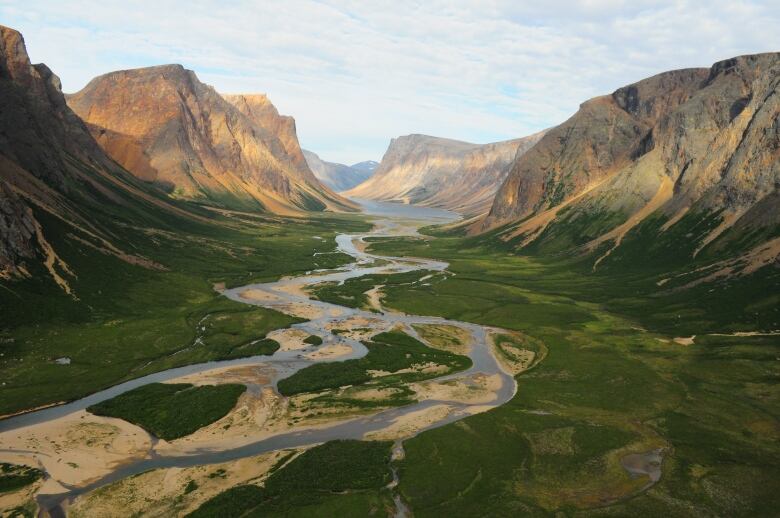As shrubs take over Labrador's tundra, the effects of climate change stretch beyond the ice
Inuit elders first flagged the explosion of green across what was formerly rockytundra in the region

During Derrick Pottle'slifetime spent on the land of northern Labrador,there have always been insects around.But those bugs have been nothing compared towhat he's seen in recent summers, when the air has been thick with black flies and mosquitoes, he says.
"My goodness,you try to go outdoors and you try to carry on activity outsiderecreation or projects or whatever you're doingand you're just totally swarmed with bugs," said Pottle, a hunter in Rigolet, which is the southernmost Inuit inNunatsiavut, Labrador's Inuit territory.
"You just virtually can't breathe for them," he said. "And it's horrible."
Insect repellent and bug jackets are a few essentialsneeded to deal with the changing seasons along thenorthern coast of Labrador, which is experiencing rapid climate changewith rising winter temperatures and thinning coastal ice disruptingdaily life.
Typically, Pottlewouldstill be snowmobiling well into lateMay. This year, he put the machineaway on April 17,after getting barely three months of use out of it.
"I drove a snowmobile back to Rigolet from Goose Bay atthe end of January. And you're zigzagging around holes in the sea ice, and believe me, that's not comfortable and that's not safe," he said.
Some of that ice he travelledonLake Melvillehad fractured by April 28the second earliest time everand a month ahead of normal, according to the Canadian Ice Service.

"I'm sure there's people still out there that [don't]believe that climate change is happening ...But when you live, when your life depends on being able to work and live in harmony with nature and Mother Nature and the elements it really impacts our lives," he said. "Like it just cut our snowmobile season."
Reports showsea ice in northern Nunatsiavut has shrunk 30 per cent per decade since the early 1980s, and days of snow cover over the entire area havedeclined.
Pottle said the weather in other months has also been swinging betweenextremes. Thereareweeks of seemingly unending spring andsummer fog that keepsplanes from landing, as well asgales of wind, night and day.
"It doesn't stop, it doesn'tslack, and it really impacts people's ability to travel," Pottle said.
He recalled working on a marineproject in August, whentemperatures shot above25 C for astretch of about 10 days, inunheard-of heat.
A green explosion
Thefluctuations are having an impact on country food, particularly the berry harvest.
"Bakeapples or any kind of berry, they're very, very sensitivewhen they're into flowering stage, and the wind can beat the flowers off or the rain can beat it off, or you get extreme heat and everything burns up," Pottlesaid, noting that a lot of ponds and places where he wouldhunt for birds are also drying up.
That aligns with what plant ecologist Luise Hermanutzcalls her "rubber boot index." When Hermanutz first started researching plant lifemore than a decade ago at Nakvak Brook in Torngat Mountains National Park, she and other scientists would need rubber boots to wade around.
Now, theywear hikers.
Along with that change in footwear, those researchers have been measuring a dramatic shift in the Torngats, a shift first flagged by Inuit elders as an explosion of green across what was formerly rockytundra.


Shrubs, such as Arctic dwarfbirch, have swept across those barrens. The amount of shrub cover has about tripled in the park since the late 1990s, according to Parks Canada ecosystem scientist Darroch Whitaker.
"The northern tip of Labrador and then over to Ungava Bay is one of the parts of the Canadian Arctic that is changing, by far, the fastest," Whitaker said.
Part of that process, called "shrubification," involvesthe coastline's shrinking ice.
"People usually don't think about ice and plants in the same breath," said Hermanutz. "But what we found is that aspeople in Labrador know the sea ice plays a really important role in regulating the climate, especially the spring and into the early summer."
Sea ice suppresses temperatures, and less of it contributes to warming year-round. That, alongwithmelting patches of permafrost, whichletsroots stretch further into the soil,fewer caribou grazing the vegetation down and the Torngat's disappearing glaciers, has transformed the landscape.
"It's an intricate little dance of all these different types of environmental factors that are causing change," Hermanutz said.

How shrubs can hidegraves and bears
Those changes have implications for the Inuit on the land. Researcher, hunterand fisher Joey Angnatok of Nain has been watching the vegetation creepinside the park.
"What I've been finding is like the green colour is getting higher up into the mountains," he said. "You can notice the colour change."
South of the park,caribou trails have disappeared under the shrubs, he said, and at Okak, a former Inuit community, plants have swallowed up gravestones.
"You'd always see these plaques nice and clearly. But it seems like over the last few years now, we went to check them out . . . and a lot of them were disappearedbecause the vegetation had just grown right over them," he said."So, everything is changing."

The shrubstend to be thickestin river valleys that peopleoften useas travel routes, said Whitaker of Parks Canada. Theycan increase the chances of a run-in with polar or black bears.
"In order to be safe around those those animals, you want to have good awareness of where they are. And this shrub cover makes it really hard to detect them," said Whitaker.
In a world so rapidly shifting, the only safe bet appears to be to expect more change. Scientists predict another doubling of that shrub cover in the next 20 years, said Whitaker, with"profound ecosystem changes" acting as "a bit of a bellwether for what's happening all across the Arctic."
Pottle predicts the changes will have majorimpacts on Inuit life across the circumpolar north.He isn't sure what can replace snowmobiles for ease of access to the land, orhow everything from caribou to partridges will manage to forage in the warming world.
"We have some major, major concerns as to what the outcome is, and how long will we be able to hold on to this lifestyle that we're living," he said.
"Nothing, human or animal, is immune from what's happening."
Thin Ice is a special CBC series about the changing climate along Labrador's north coast, and the Indigenous-led responses arising from it. Read more in this series here.
With files from Meg Roberts and Adam Walsh












_(720p).jpg)


 OFFICIAL HD MUSIC VIDEO.jpg)
.jpg)



























































































